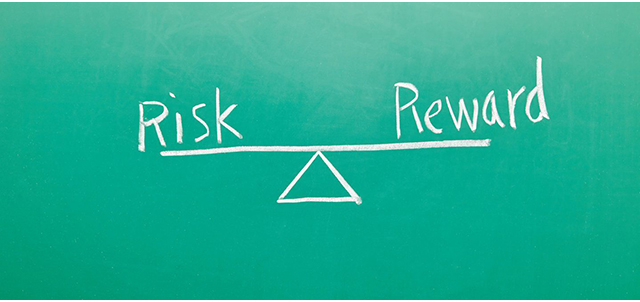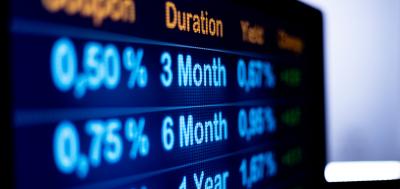What to Know Before Saying Hi to High-Yield Bonds

Given their name, high-yield bonds might attract investors looking for products that offer the potential to increase their returns. But it’s important to remember that the level of return an investment might achieve usually correlates with its level of risk.
Generally, that’s because investors willing to take on additional risk want to be compensated accordingly, and the bond market is no exception. While high-yield bonds can give some investors with a greater risk tolerance a way to diversify their portfolio, they aren’t right for everyone.
What Is a High-Yield Bond?
In corporate America, companies are rated based on their credit quality—the likelihood that they’ll be able to repay their debt based on factors such as their financial situation, business prospects and past repayment history. If a company is deemed by credit rating agencies to have a generally low risk of default, it will receive a good credit rating and is considered investment grade.
However, if a company is deemed to have a high risk of default, it might be considered non-investment grade. Bonds rated below Baa3 by ratings agency Moody’s or below BBB by Standard & Poor’s and Fitch Ratings are considered “speculative grade” or high-yield bonds. Sometimes also called junk bonds, these bonds offer higher interest rates to attract investors and compensate for the higher level of risk.
Like other types of bonds, when you buy a high-yield bond, you’re lending money to the issuer. In exchange, that issuer promises to pay you interest, also known as a coupon, and agrees to pay you back your principal—the bond’s face value—when the bond reaches its maturity date.
Investors seeking greater returns than what they might get from a Treasury bond or an investment-grade corporate bond might look to high-yield bonds instead. But before you buy one, you’ll want to make sure they’re a fit for your investment profile and financial goals.
What Risks Are Involved?
All bond investments carry risk, but it’s important to understand how the risks of high-yield bonds might be different than those of investment-grade products.
Default risk: There’s a risk with any bond that the issuing company might not be able to meet its obligations. However, the risks of default are typically higher for companies that issue high-yield bonds.
Interest rate risk: Bond prices generally move in the opposite direction of interest rates. When interest rates go up, bond prices tend to go down. Longer maturity bonds are especially vulnerable because there’s a longer period during which interest rates might change. Because they generally have shorter maturities and pay out higher interest, high-yield bonds are generally less affected by interest rate moves than other types of bonds.
Economic risk: When the economy gets shaky, investors might rush to shed their high-yield bonds and replace them with safer ones, such as U.S. Treasury bonds. This can lead to a drop in high-yield bond prices if the market supply exceeds the demand.
It’s also important to understand that high-yield bonds tend to move in the same direction as stocks. Therefore, if an investor is looking to diversify a stock-heavy portfolio, they might not achieve that objective with high-yield bonds.
Liquidity risk: Liquidity is the level of ease an investor might have if they want to sell an investment. High-yield bonds can be less liquid than investment grade bonds. You can check corporate bond trading activity, and thus liquidity, with FINRA's Fixed Income Data.
How Can I Invest in High-Yield Bonds?
Some well-known and many lesser-known companies issue high-yield bonds. Investors can buy individual high-yield bonds or, alternatively, you can purchase shares in a high-yield mutual fund or a high-yield exchange-traded fund (ETF).
With the latter two, you’re spreading your risk among a basket of high-yield bonds and have a professional investment manager assessing the creditworthiness of the bonds in the funds.
But high-yield mutual funds and ETFs also come with risks. For instance, if a number of investors want to cash out their shares, the fund might have to sell assets to raise money for redemptions. The fund might have to sell bonds at a loss, causing its price to fall.
If you’re interested in investing in high-yield bonds, do your research. High-yield bonds aren’t all created equal; some carry much higher risk of default than others.
Useful information can be found in the prospectuses filed by companies offering high-yield bonds. Prospectuses for registered corporate bond offerings can be found on the SEC’s EDGAR website. FINRA’s Fixed Income Data can also provide you with important information about a bond.
And keep in mind the basic principle of risk and reward. A high-yield bond might appear enticing because of its high interest rate. But the potential reward may not be worth the risk involved.
Learn more about bonds.



